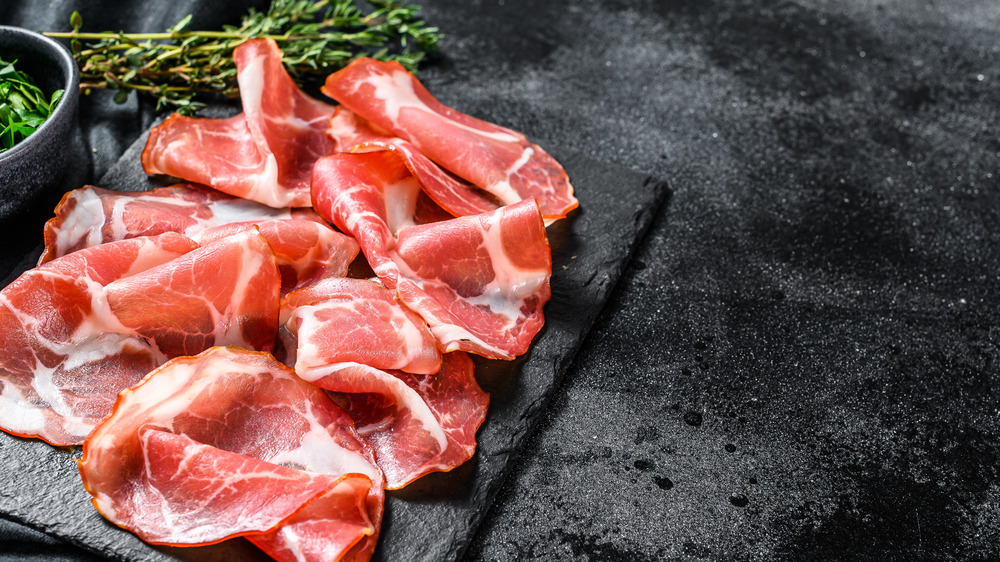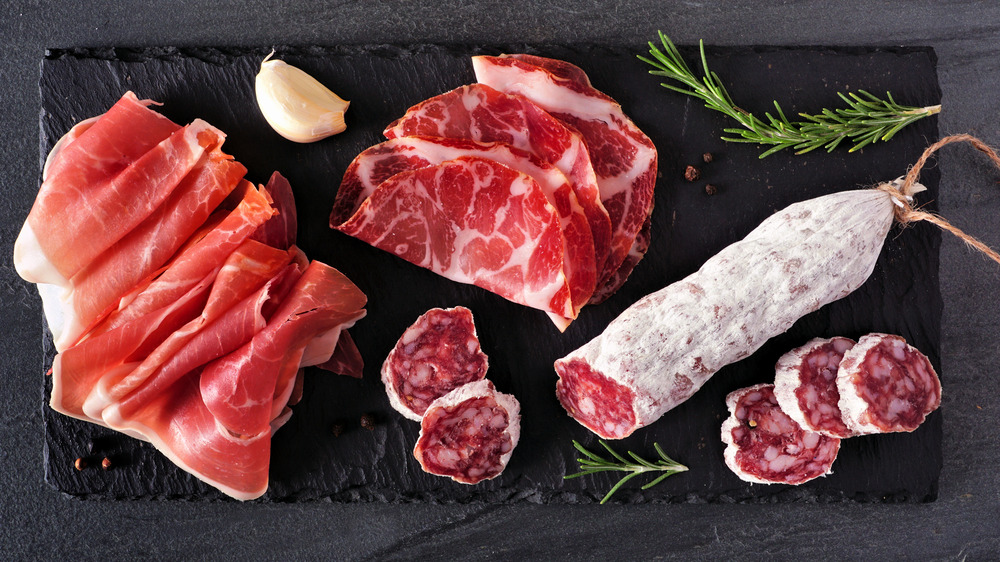How Is Capicola Different From Other Cured Meats?
Now that charcuterie boards are all the rage, it's more important than ever to have a good grasp on what distinguishes the cured meats commonly found on the boards. Capicola, which can also be referred to as coppa or capocollo depending on the specifics, is a regular on the popular snack trays. According to Foodosity, capicola is "a traditional dry-cured, cold cut meat of Italian origin."
If you're talking Italian, all cured meats like capicola fall under the salumi umbrella — salumi meaning the processes of curing and preserving meats (via Bricco Salumaria). This term is not to be confused with 'salami,' which refers to a specific type of sausage. While these meats may be in the same family, they have unique flavor profiles, production methods, and ingredients that differentiate them, according to 10 Best. So what exactly are those differences between capicola and the meats that are considered salumi?
How other cured meats compare to capicola
Let's start with the ever-popular prosciutto. Like capicola, prosciutto is also thinly sliced cured pork. According to Foodiosity, prosciutto and capicola's differences start at the source, as prosciutto is made from the "hindquarters of the pig" and capicola is made from the neck and shoulder (aka the coppa muscle). Prosciutto also takes more patience, with a 24-month aging period. Capicola, on the other hand, can go from pig to plate in just 6 months.
Salami, another popular Italian cured meat variety, is even more different from capicola. This meat, according to Spoon University, is a compilation of ground pork, and sometimes beef, with seasonings that are pumped into a casing. It's hung to age and develop flavor. Salami makes up many big names in charcuterie, like soppressata — an Italian-made salami that packs some spice with its "hot" variety or sweetness with a "sweet" option, says Wine4Food.
Mortadella, another Italian sliced meat, has more in common with bologna (it does come from Bologna, after all) than it does capicola. To make it, pork is ground into almost a paste, and pistachios — among other things — are added to the meat, according to 10 Best.
So whatever you're serving up, be it capicola or another cured meat, now you know what makes the varieties unique.

